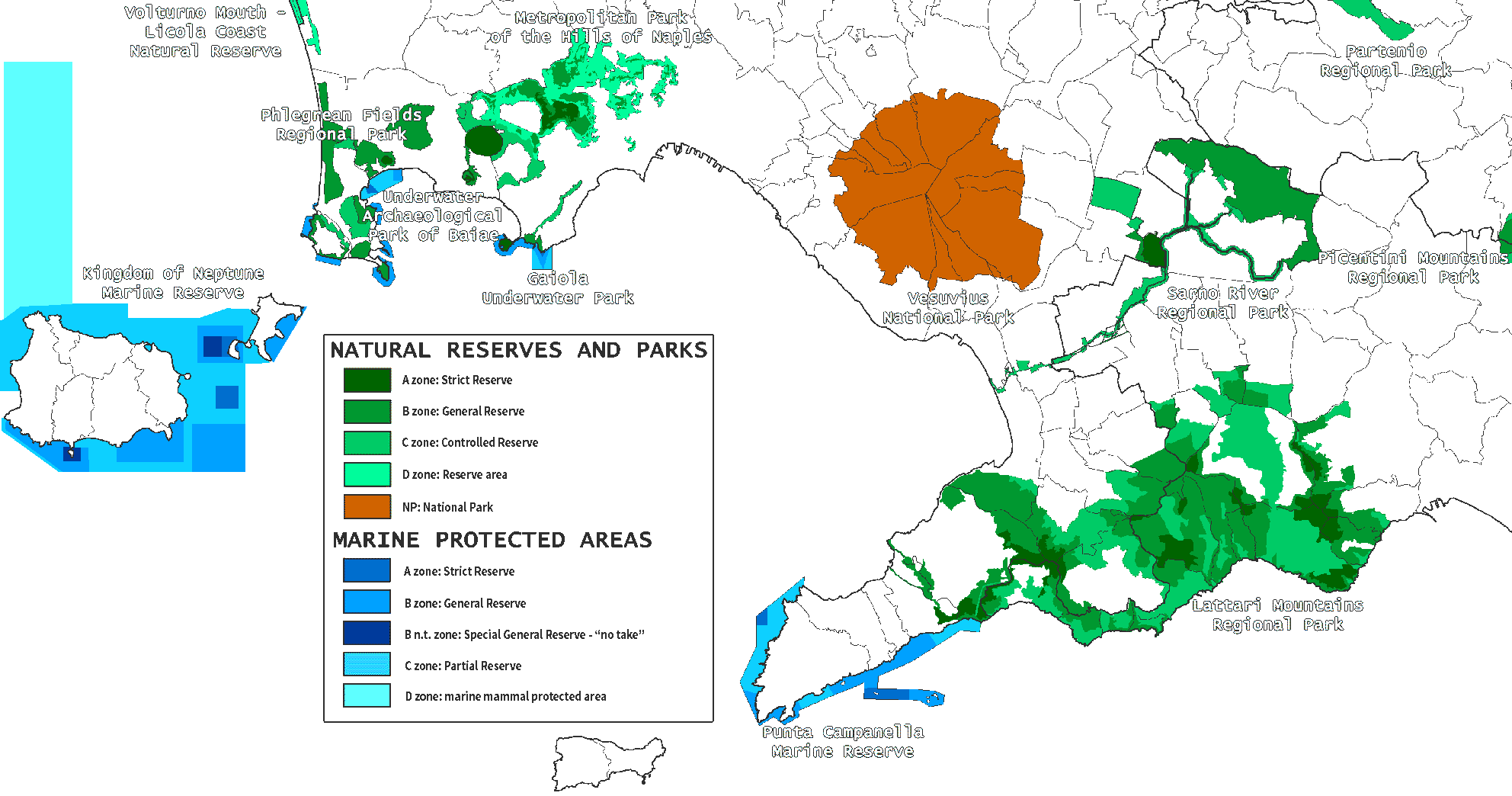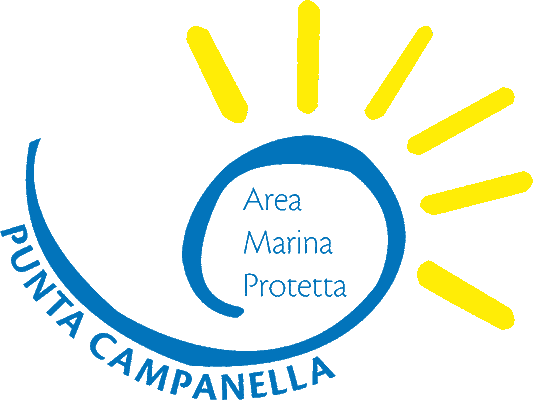Punta Campanella Marine Reserve
The ~30 km coastline surrounding the tip of Sorrento Peninsula, from Punta del Capo in Sorrento, to Punta Germano on the Amalfi Coast side of Vico Equense, are part of this Natural Marine Reserve, named after the very tip Punta Campanella ("little bell", like the one used as an alarm signal from the Minerva watchtower built there). The reserve protects the high biodiversity of this beautiful and mostly wild area, with its peculiar microclimates created by the uneven territory, alternating arid slopes to deep and moist valleys, which create its unique landscapes.
The limestone coast, covered by volcanic sediments from the nearby Vesuvius, hosts the typical garrigue vegetation with sparse dwarf shrubs. Very few species inhabit the mostly bare rocks in contact with seawater while, heading more inland and up the hills, we start to see the common vegetation patterns of Lattari Mountains. Lovers of birdwatching should keep an eye on this area from the peaks above it: it is easy to observe migratory species (like the buzzard and the sparrowhawk), that often pass through the Peninsula and its islands on their way between Africa and Europe. Kestrels can be seen flying high, while peregrine falcons are a bit more rare, and plenty of other smaller birds are easier to spot.
But the beauties of nature keep going even underwater, with weeds of many colors and a rich fauna, together with some of the best underwater landscapes of the Mediterranean Sea, making this area a must see for scuba divers. Environments are diverse due to the incline of the substrate, creating places with little sun exposure even close to the land, sudden shallows offshore, and the many subaqueous caves from the karst topography. Those allow for a great biodiversity of fishes, molluscs, crustaceans, seaweeds, corals, etc.: common are flathead grey mullets, seabasses and breams that you can taste at the local restaurants, seahorses, starfish, sea urchins, and plenty more; rarer are sea turtles and dolphins, only occasionally spotted. Red coral was typical from the area, but it was unfortunately destroyed by wild fishing in the last two centuries.
Li Galli (or Sirenuse) archipelago of Positano, composed of Gallo Lungo, La Rotonda and Dei Briganti tiny islands, also falls within the Reserve, with myths considering it the Land of the Sirens met by Ulysses and the Argonauts during their respective journeys. They are a noticeable landmark from most of the southern coast, although from the Amalfi side you can only recognize its largest island, shaped like a dolphin, which hosts a lighthouse and a Roman Villa, unfortunately not open to visitors since the whole archipelago is privately owned.
Between Punta Campanella and Punta Penna, an inlet hides the Ieranto Bay, a Natural Area reachable by hiking a 4 km trail from Nerano, hamlet of Massa Lubrense. Its small beach, far from the tourist centers and crowds, rewards the efforts of reaching it with its tranquility, pristine waters and gorgeous view towards Capri island and its Faraglioni in the distance. More similar coves dot the coastline within the reserve, some easier to reach and populated, other more remote: Puolo, Marina della Lobra, Mitigliano, Marina del Cantone, Recommone and Crapolla, to name some.
Other Protected Areas nearby:





 Ring us!
Ring us!